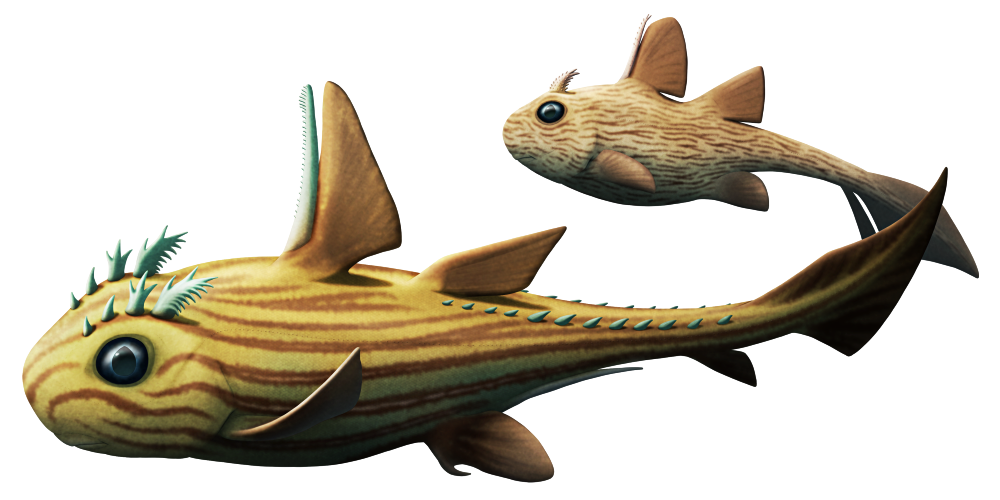Echinochimaera meltoni here was a cartilaginous fish found in the Bear Gulch Limestone deposits in Montana, USA, dating to the Early Carboniferous about 326-318 million years ago.
It was an early member of the chimaera lineage, but unlike its mostly-scaleless modern relatives its body was covered in small shark-like placoid scales.
It also showed a large degree of sexual dimorphism, with males and females almost looking like different species entirely. Males are identified by the presence of claspers and were up to 15cm long (6″), with four pairs of spiny “horns” on their heads, larger more pointed dorsal fins, and rows of spines along their tails. Females were less than half the size of males at just 7cm long (2.75″), with only one pair of smaller “horns” and none of the additional spines.
The rounded bodies and relatively small paddle-like tail fins of both sexes suggest they weren’t very strong swimmers, probably relying on their large dorsal fin spines to defend themselves – which may have been venomous much like those of modern chimaeras.

